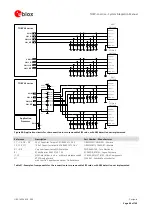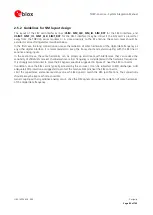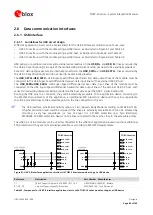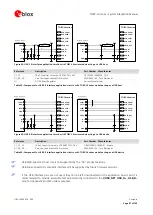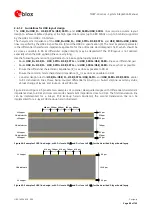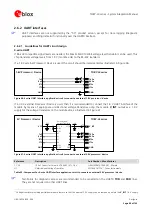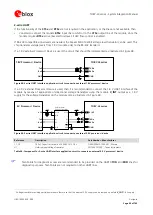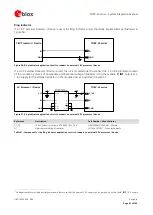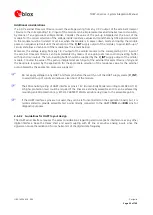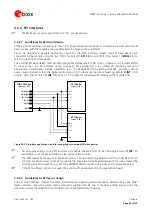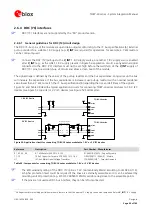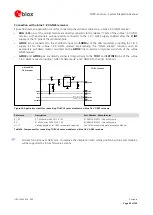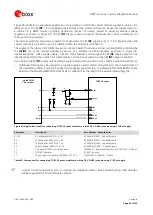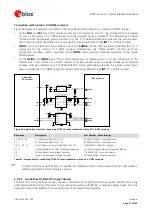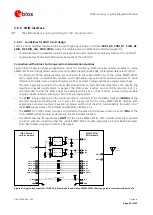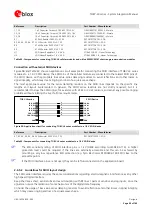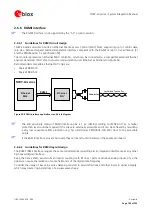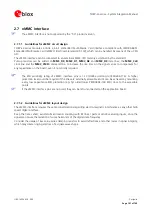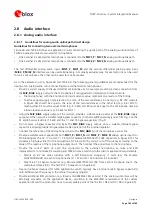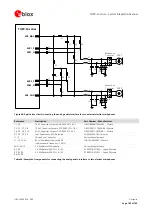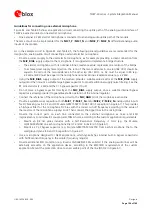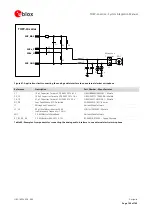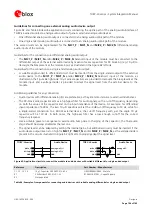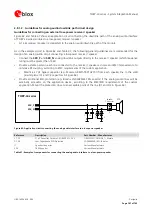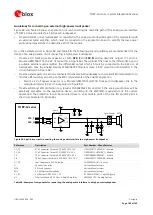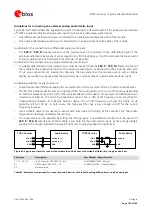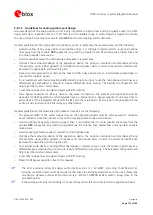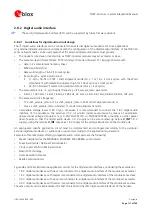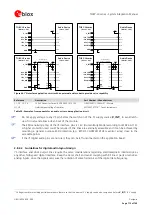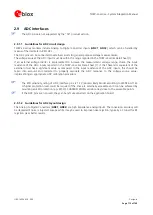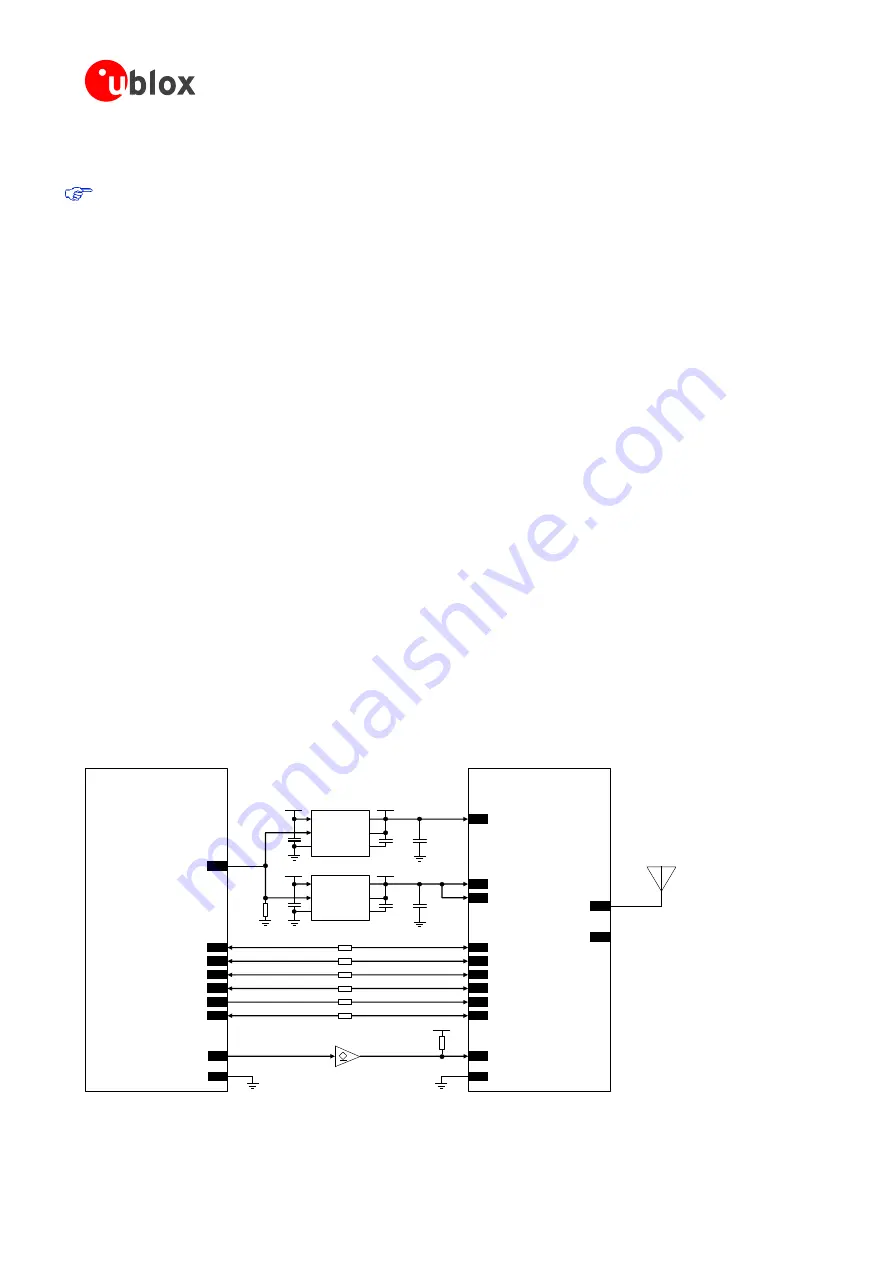
TOBY-L4 series - System Integration Manual
UBX-16024839 - R04
Design-in
Page 98 of 143
2.6.5
SDIO interface
The SDIO interface is not supported by the "50" product version.
2.6.5.1
Guidelines for SDIO circuit design
TOBY-L4 series modules include a 4-bit Secure Digital Input Output interface (
SDIO_D0
,
SDIO_D1
,
SDIO_D2
,
SDIO_D3
,
SDIO_CLK
,
SDIO_CMD
), where the module acts as an SDIO host controller designed to
communicate with compatible u-blox short range radio communication modules by means of the uCPU API
communicate with external SDIO devices by means of the uCPU API
Connection with u-blox short range radio communication modules
Figure 58 and Table 43 show an application circuit for connecting TOBY-L4 series cellular modules to u-blox
EMMY-W161 short range radio communication modules supporting IEEE 802.11a/b/g/n/ac data rates for Wi-Fi:
The SDIO pins of the cellular module are connected to the related SDIO pins of the u-blox EMMY-W161
short range radio communication module, with appropriate low value series damping resistors to avoid
reflections and other losses in signal integrity, which may create ringing and loss of a square wave shape.
The most appropriate value for the series damping resistors on the SDIO lines depends on the specific line
lengths and layout implemented. In general, the SDIO series resistors are not strictly required, but it is
recommended to slow the SDIO signal, for example with 22
or 33
resistors, and avoid any possible
ringing problem without violating the rise / fall time requirements.
The
V_INT
supply output pin of the cellular module is connected to the shutdown input pin (
SHDNn
) of the
two LDO regulators providing the 3.3 V and 1.8 V supply rails for the u-blox EMMY-W161 module, with
appropriate pull-down resistors to avoid an improper switch-on of the Wi-Fi module before the switch-on of
the
V_INT
supply source of the cellular module SDIO interface pins.
The
GPIO1
pin of the cellular module is connected to the active low full power down input pin (
PDn
) of the
u-blox EMMY-W161 module, implementing the Wi-Fi enable function.
The WLAN antenna RF input/output (
ANT1
) of the u-blox EMMY-W161 Wi-Fi module is directly connected
to a Wi-Fi antenna considering that the u-blox EMMY-W161 module integrates a 2.4 GHz BAW band pass
filter that enables co-existence with LTE RF signals.
R2
LDO regulator
EMMY-W161
Wi-Fi module
3V3
VCC
U1
C1
R1
SD_D0
19
SD_D1
20
SD_D2
21
SD_D3
22
SD_CLK
17
SD_CMD
18
OUT
IN
SENSE
BYP
SHDNn
GND
TOBY-L4 series
cellular module
SDIO_D0
66
SDIO_D1
68
SDIO_D2
63
SDIO_D3
67
SDIO_CLK
64
SDIO_CMD
65
V_INT
5
C3
3V3
25
C5
LDO regulator
1V8
VCC
U2
C2
OUT
IN
SENSE
BYP
SHDNn
GND
C4
VIO1
26
C6
VIO2
27
R3
R4
R5
R6
R7
ANT1
45
ANT2
40
Wi-Fi
antenna
Wi-Fi enable
PDn
28
GPIO1
21
GND
GND
3V3
Open Drain Buffer
R8
Figure 57: Application circuit for TOBY-L4 cellular module and u-blox EMMY-W161 short range radio communication module

